Kalemegdan, part of the most significant historical landmark, the Belgrade Fortress, is the largest and most beautiful park in Belgrade. Overlooking the confluence of the Sava and Danube rivers, Kalemegdan covers the plateau around the fortress, transformed into a park in the late 19th century. This city center oasis offers a serene escape from urban hustle, seamlessly blending lush greenery with millennia-old fortifications, embodying the Serbian capital’s rich history, vibrant culture, and natural beauty.
Table of Contents
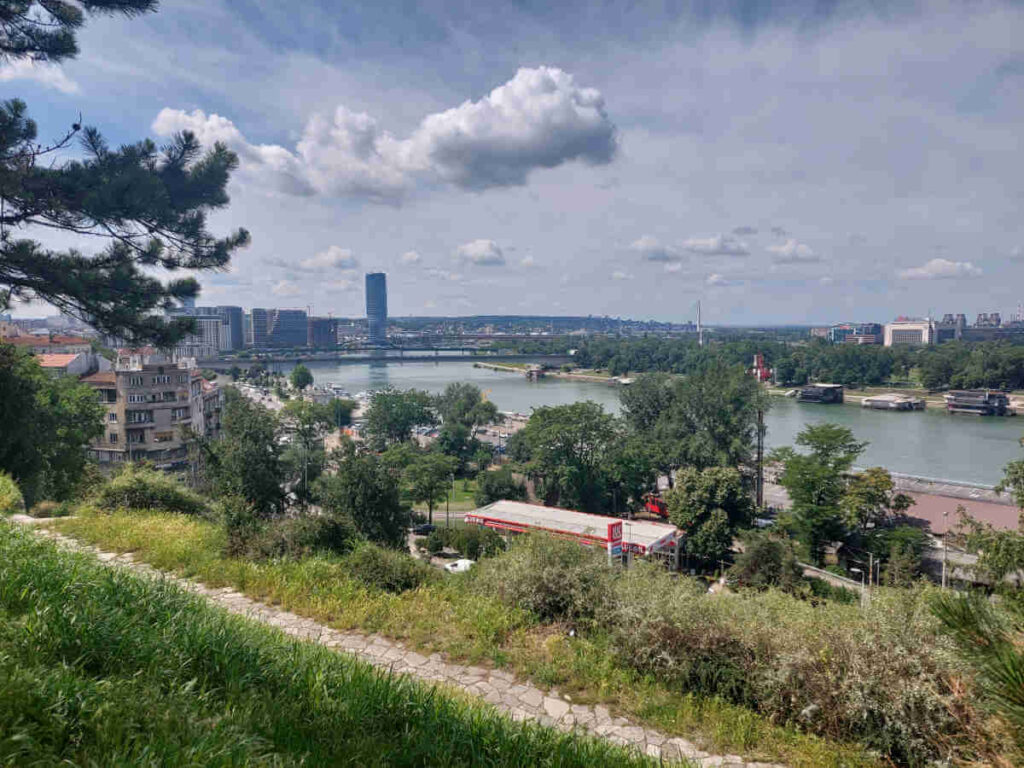
The History of Kalemegdan Park
When the Belgrade Fortress served as the city’s main military stronghold, the plateau that is now the park was used to observe and await the enemy for battle. Hence, the name “Kalemegdan” derives from two Turkish words: “kale” (fortress) and “megdan” (battlefield), reflecting its storied past as a strategic military fortification.
In the mid-19th century, after the fortress lost its military function, efforts began to transform the vacant space separating the town of Belgrade from the fortification into a park, modeled after the parks of European metropolises of that time. The oldest plans for the design of Kalemegdan date back to 1867, created by Belgrade’s first urban planner, Emilijan Joksimović. During this period, the area was afforested and arranged in the style of English parks.
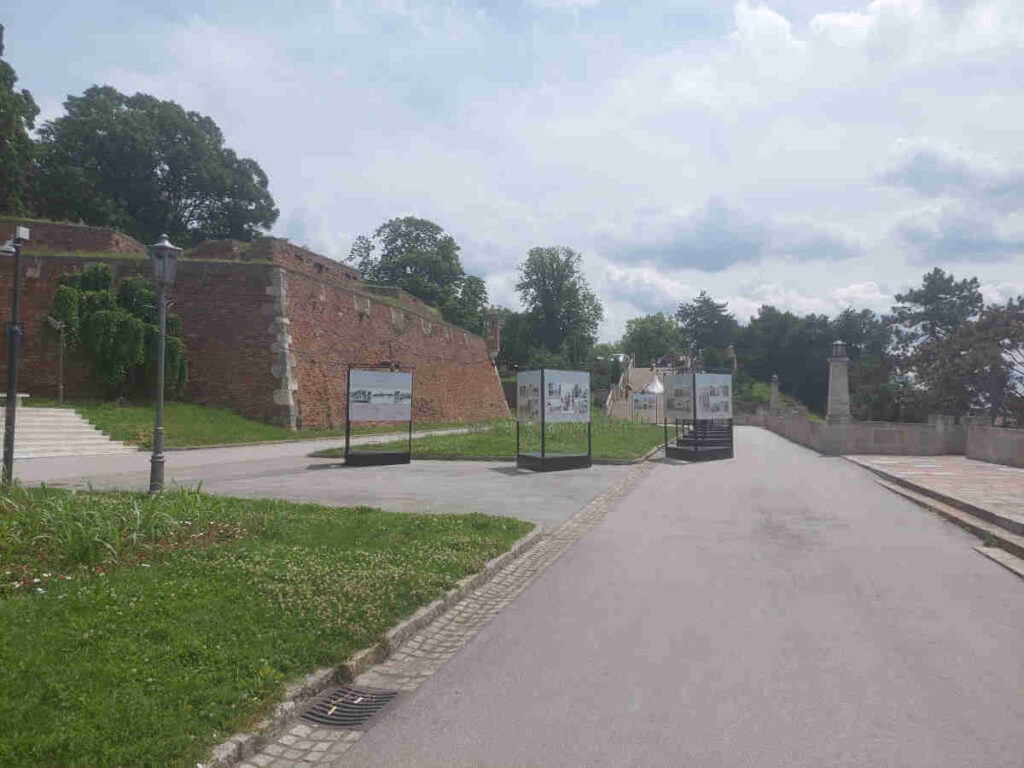
For newer generations, Kalemegdan represents the most beautiful park in Belgrade, but for many centuries, it was just a neglected field. Today, residents often mistakenly refer to the entire Belgrade Fortress as the Kalemegdan Fortress or simply Kalemegdan, even though the park occupies the smaller and much younger part of the historical fortress. It is bizarre that a fortress of such great historical significance, older than two millennia, is often named after a field or park that surrounds it on one side.
Kalemegdan Park Amenities
The park is adorned with monuments honoring notable cultural and public figures. Among its attractions are the Military Museum, the Cvijeta Zuzorić Art Pavilion, the Monument of Gratitude to France, the sculpture-fountain “Fisherman” by Simeon Roksandić, the Belgrade Zoo, a children’s amusement park, numerous sports courts, as well as various bars and restaurants.
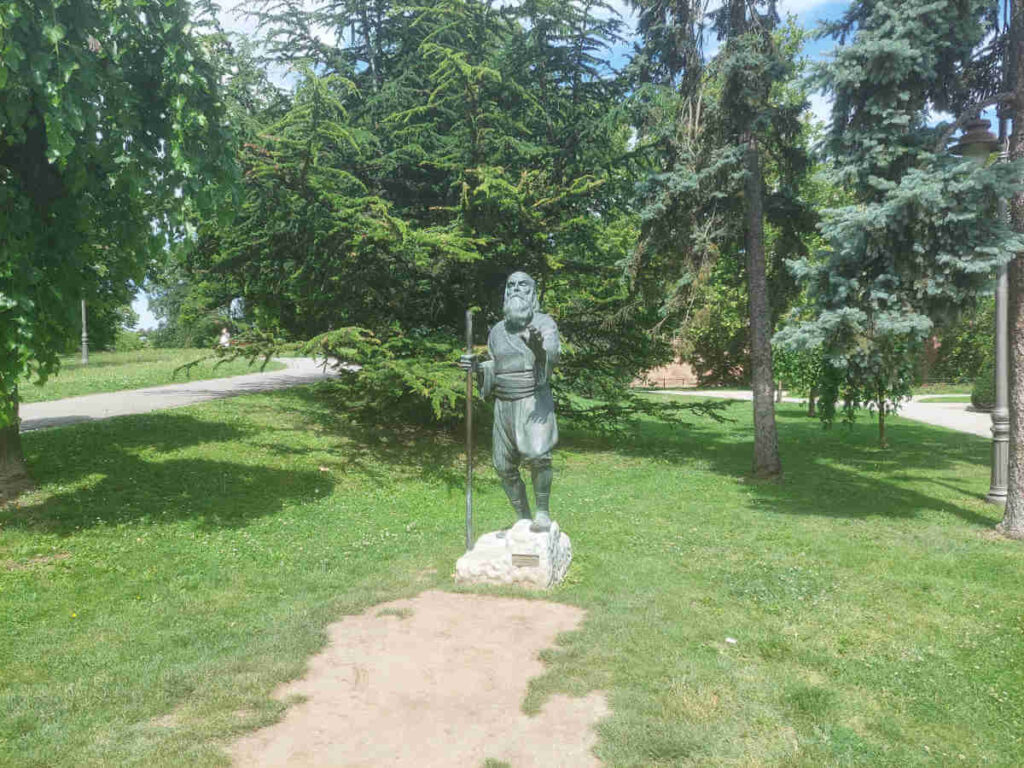
Great and Little Kalemegdan
Tourists usually enter Kalemegdan Park by crossing the pedestrian crossing from Knez Mihailova Street. The park is divided into two sections: Great Kalemegdan and Little Kalemegdan.
Great Kalemegdan Park
Great Kalemegdan extends from Uzun Mirkova Street towards the Sava River and was designed as a true park, with benches and diverse vegetation. Here, numerous sculptures and monuments remind visitors of important historical moments and prominent figures in Serbian art and culture. Therefore, Kalemegdan serves as a kind of antechamber to the Belgrade Fortress, whose history is inseparably linked with that of the Serbian capital.
Monument of Gratitude to France
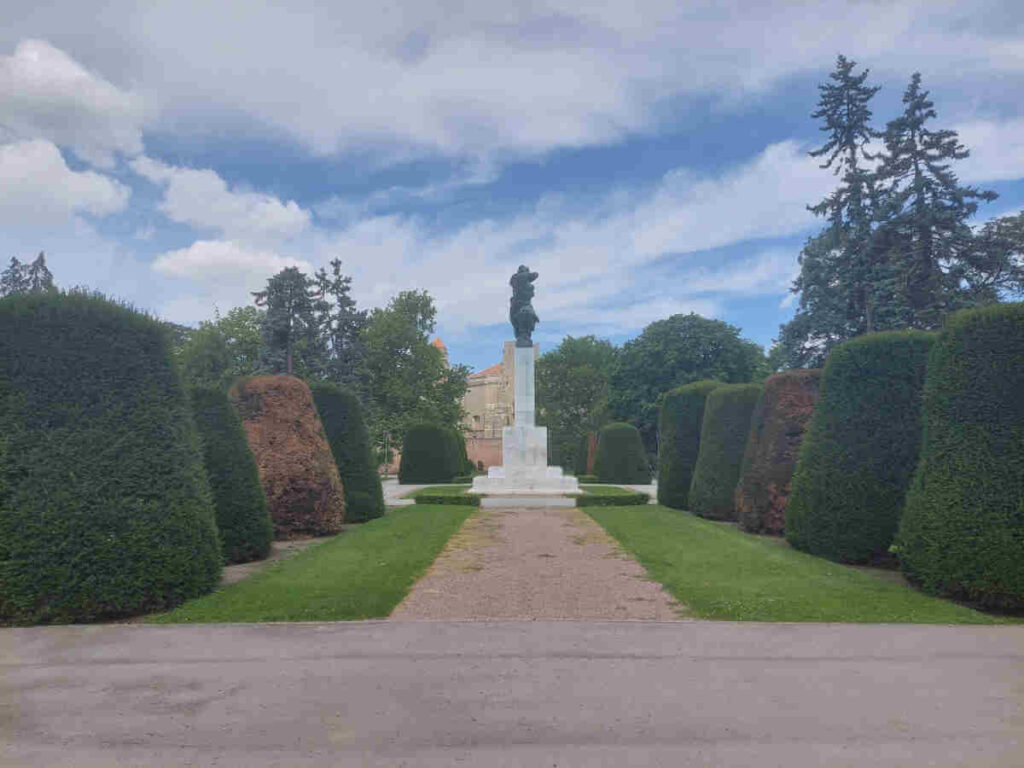
As you enter Kalemegdan from Knez Mihailova Street and pass by the souvenir stands, you will see the grand Monument of Gratitude to France, which was officially unveiled in November 1930. This monument was erected in appreciation of France’s support during World War I. The bronze statue of a woman with a sword, created by sculptor Ivan Meštrović, represents France.
On the left side of the pedestal is a composition called Warriors, symbolizing French and Serbian soldiers. On the right side is a composition of a female figure with children, embodying the Sorbonne and its educational aid to Serbian youth during and after the war. The inscription on the back of the pedestal reads, “We love France as she loved us 1914–1918.” The green area around the monument is designed in the style of French parks.
The Fisherman Sculpture-Fountain
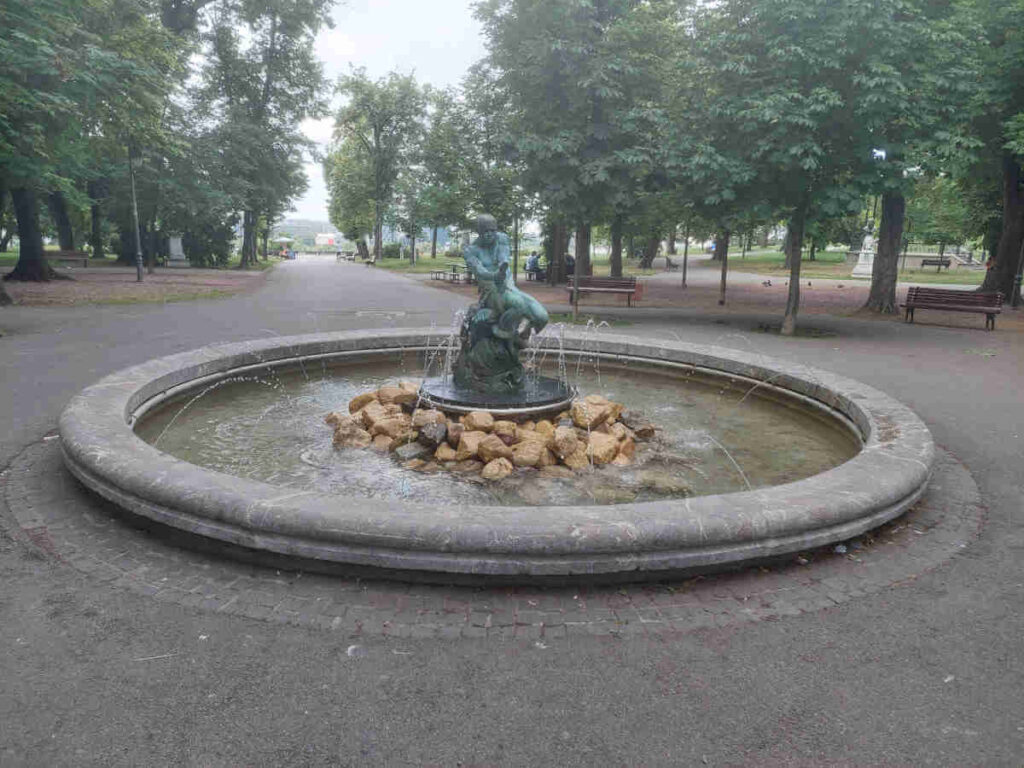
The Fisherman sculpture-fountain, standing 150 centimeters tall and cast in bronze under the guidance of sculptor Simeon Roksandić, depicts a fisherman struggling with a snake.
Sava Promenade
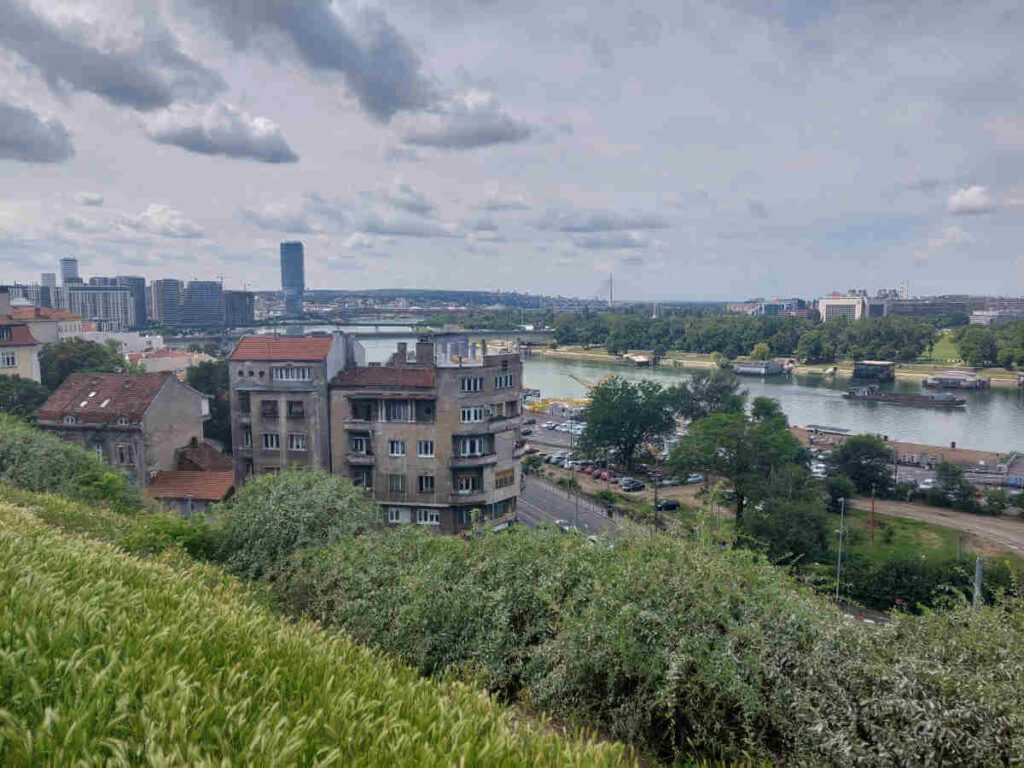
As you pass the Fisherman fountain and head towards the river, you’ll reach the Sava Promenade, which offers some of the most stunning views of Belgrade. Here, you can sit on a bench, relax, and soak in the wonderful atmosphere.
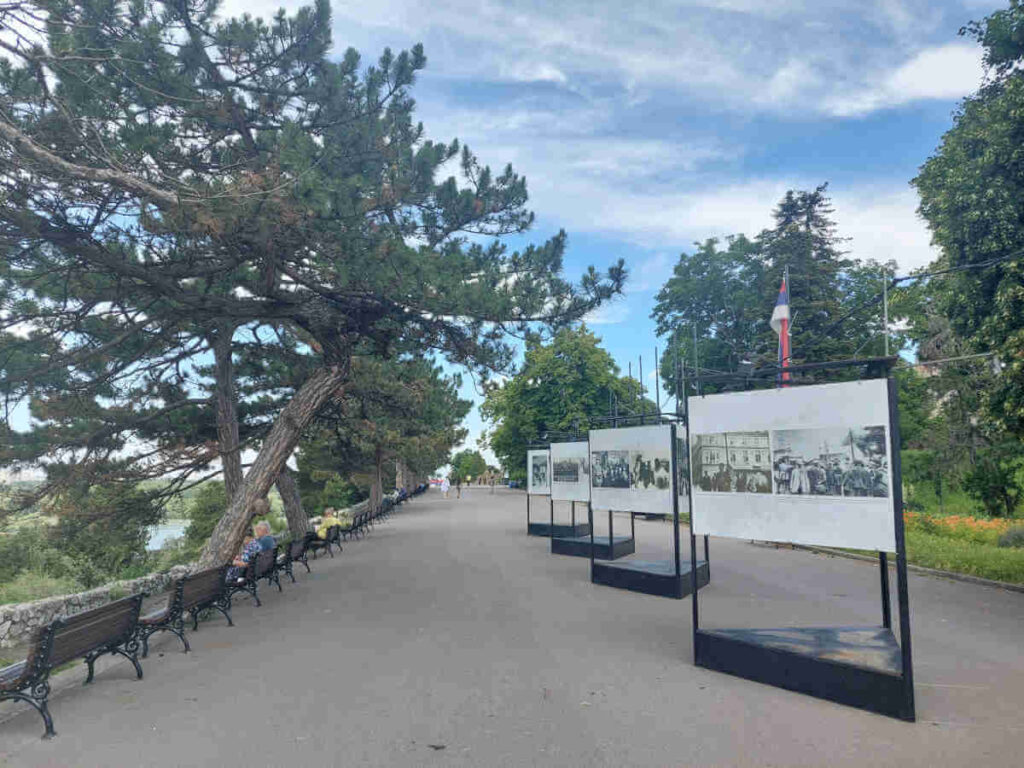
The promenade frequently hosts exhibitions, allowing you to enjoy art or learn about history during your visit.
Grand Staircase
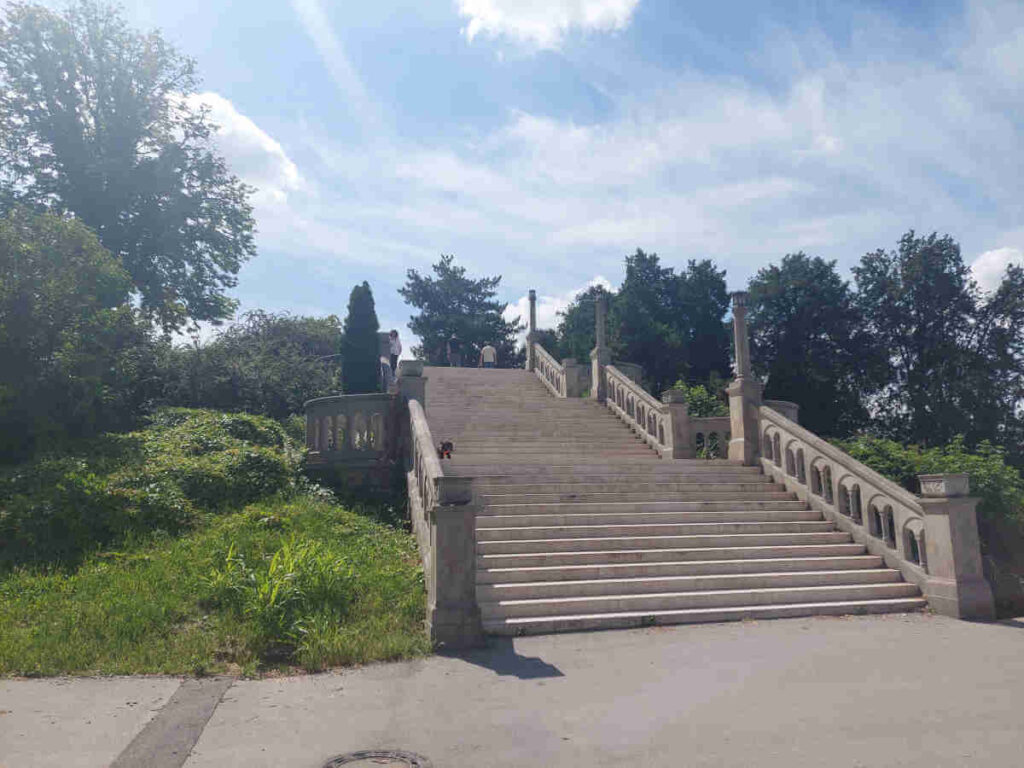
This impressive staircase is adorned with elegant balustrades and decorative lanterns, offering visitors a picturesque route between different levels of the park. The construction is designed in the spirit of Romanesque art and Serbian-Byzantine style.
As you ascend or descend the steps, you can enjoy stunning views of the surrounding greenery, the Belgrade Fortress, and the confluence of the Sava and Danube rivers, making it a popular spot for both leisurely strolls and photo opportunities.
Tombs of National Heroes
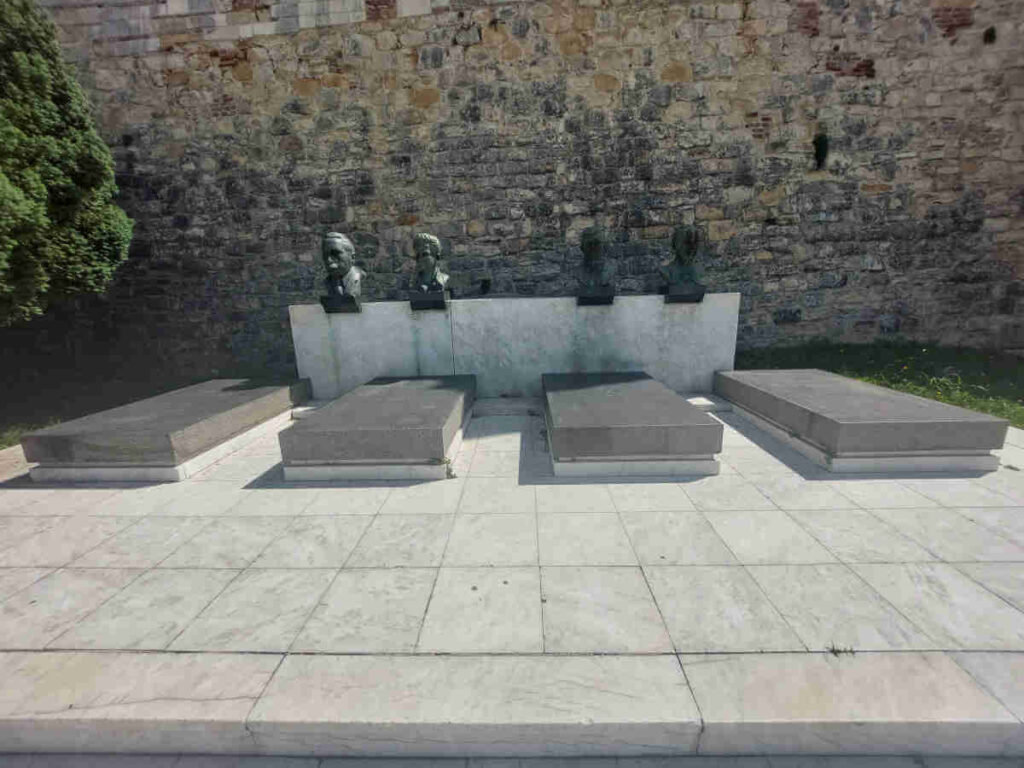
As you descend the Grand Staircase, you will see on the right side the tombs of national heroes, established in 1948. This is the final resting place of Moša Pijade (1890–1957), Djuro Djaković (1886–1929), Ivan Milutinović (1901–1944), and Ivo Lola Ribar (1916–1943).
Japanese Fountain

The Japanese Fountain was added to the park in August 2010, as a sign of gratitude to the Japanese people for the donations that the City of Belgrade received. The fountain is the work of sculptor Bojan Mitrović.
Small Staircase
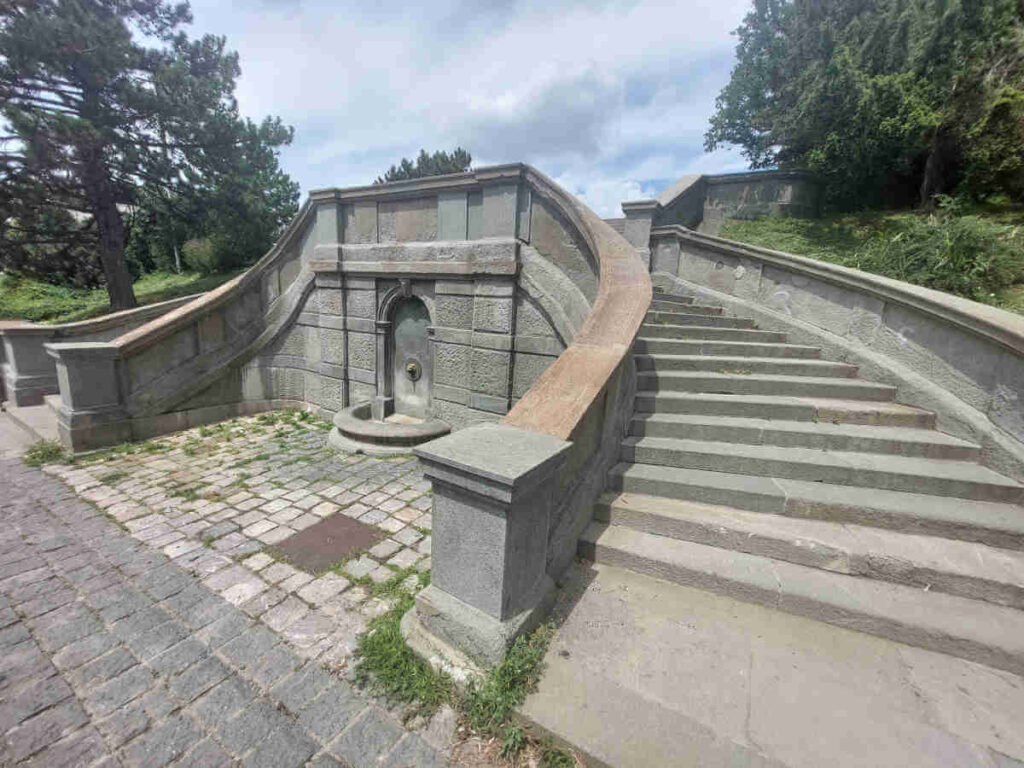
In addition to the Grand Staircase, the Small Staircase is located on the opposite side, across from the Embassy of France on Pariska Street. It holds the distinction of being the first object of park architecture in Belgrade, having been created in the early 20th century from a design by Jelisaveta Načić, Serbia’s first female architect. Adjacent to the staircase is a decorative fountain also dating back to the same period.
Little Kalemegdan Park
Little Kalemegdan, which extends from the Cvijeta Zuzorić Art Pavilion to the Belgrade Zoo, was designed with recreational purposes in mind. The area features a children’s play area and an amusement park, highlighted by the iconic Ferris wheel installed in 1964. This Ferris wheel was considered state-of-the-art at the time of its production and continues to be a cherished attraction in the park.
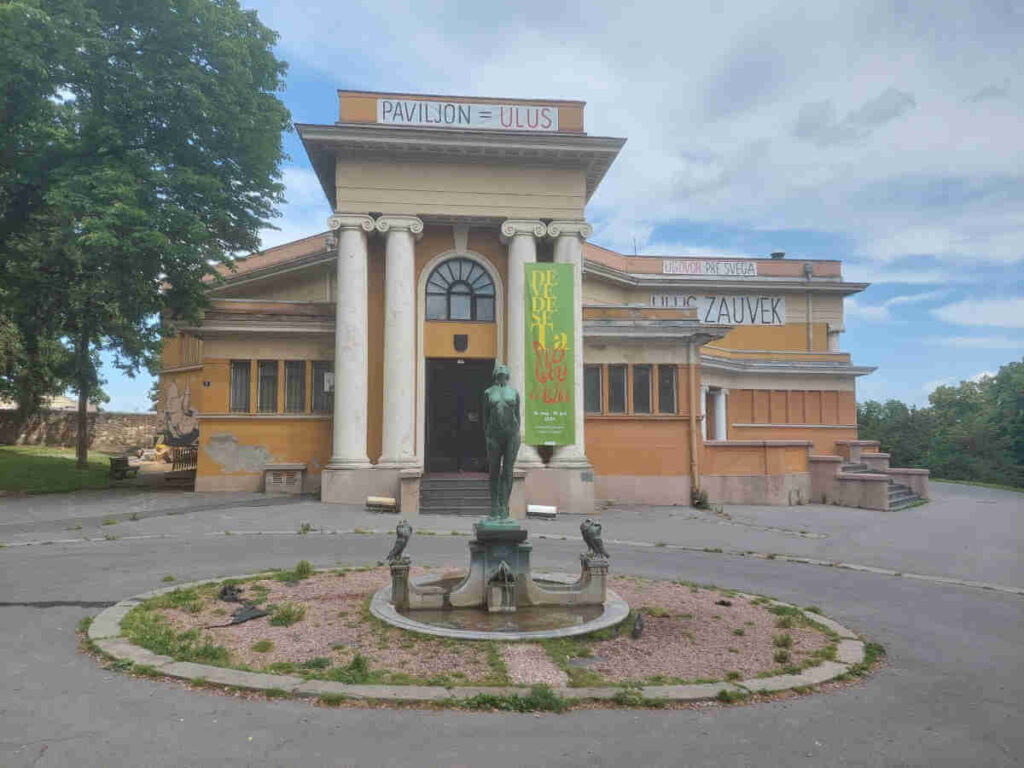
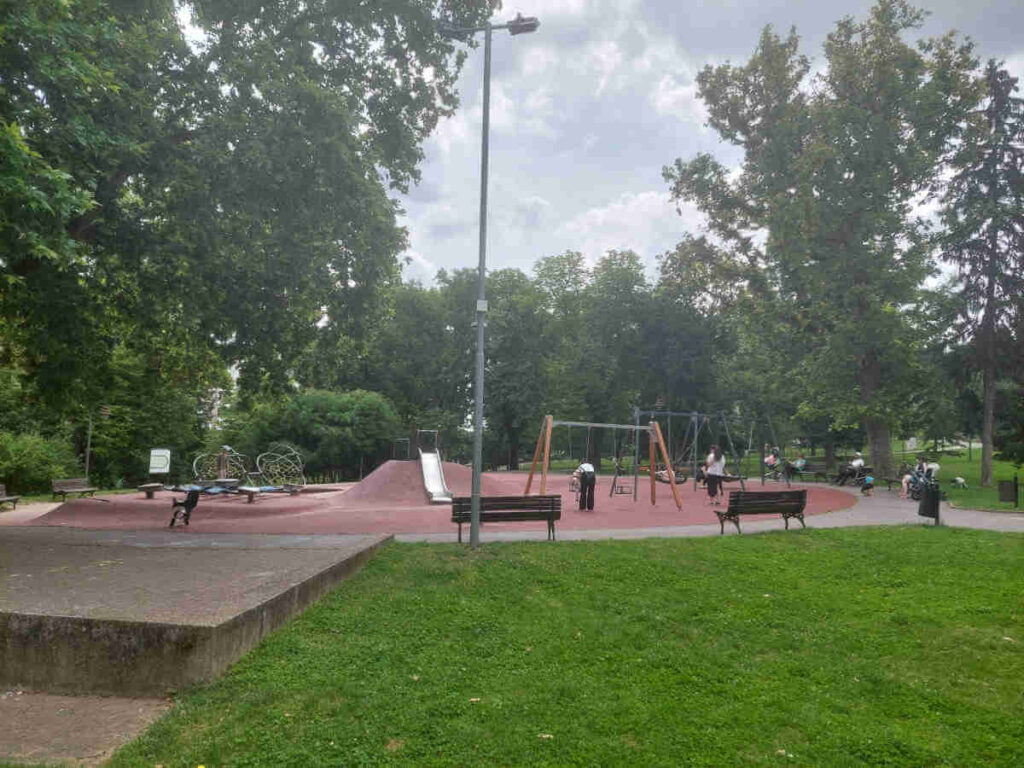
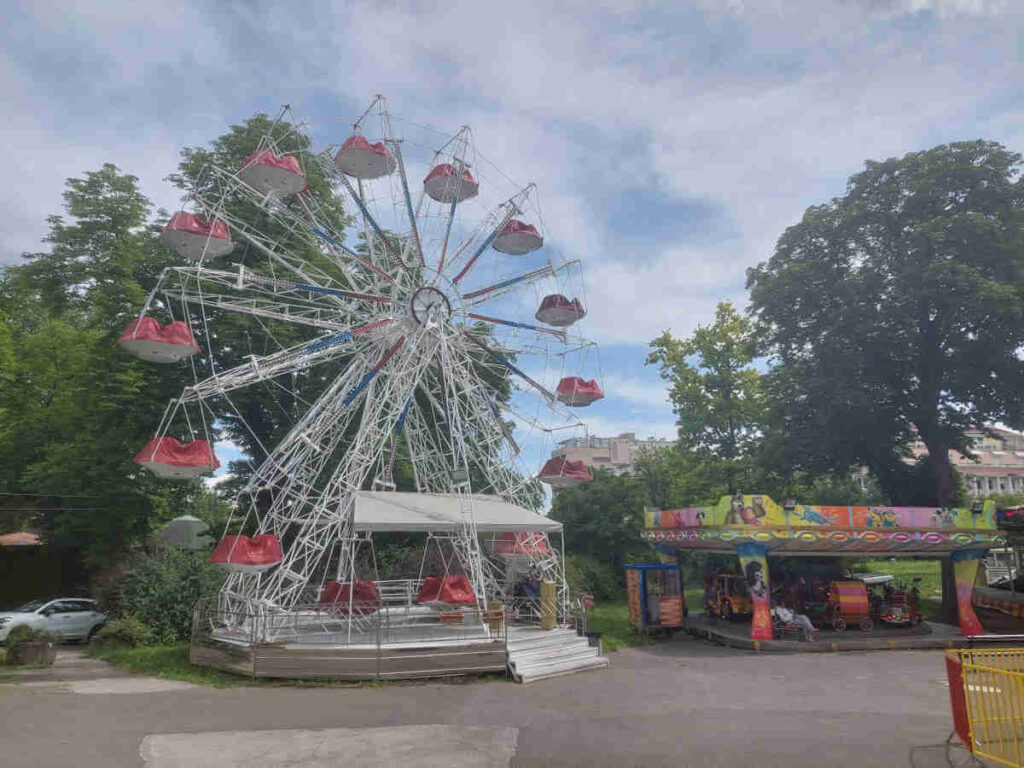
A Scenic Spot for Photographers
Kalemegdan Park is a photographer’s paradise. The park’s diverse landscapes, historic architecture, and stunning viewpoints offer endless opportunities for capturing beautiful moments.
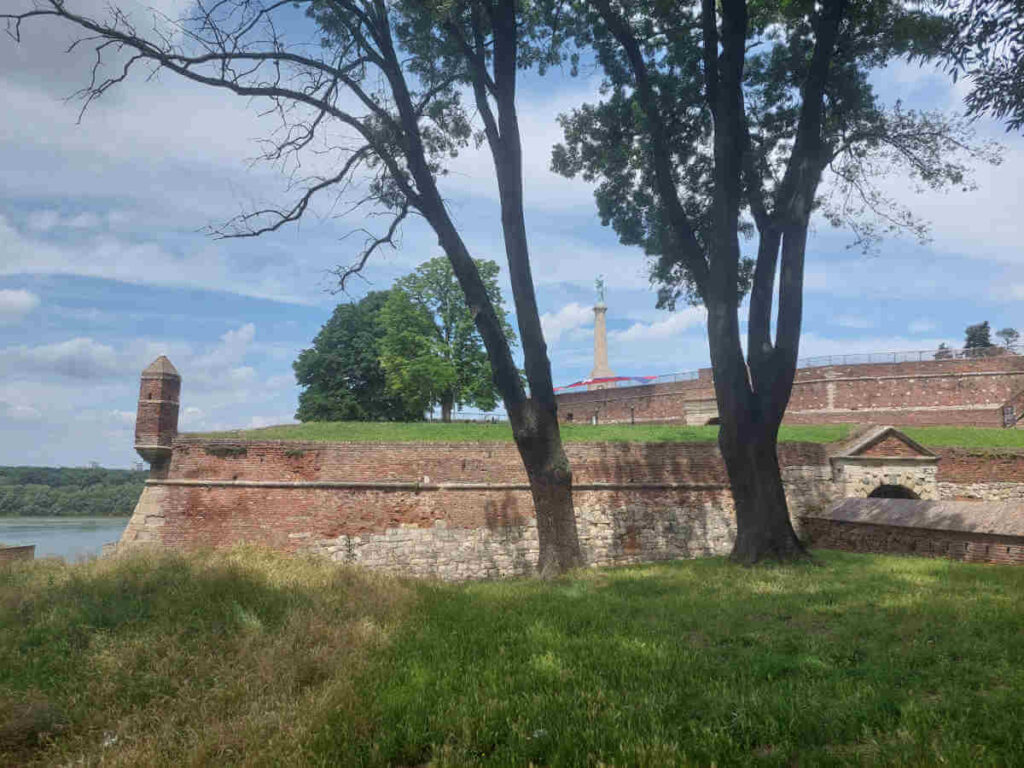
The iconic Victor Monument, standing proudly at the edge of the fortress with the rivers in the background, is one of the most photographed landmarks in Belgrade. Whether you’re capturing the golden hues of a sunset over the Danube or the intricate details of ancient stone walls, Kalemegdan offers a wealth of visual inspiration.
Beauty in Every Season
Each season brings a new charm to Kalemegdan Park. In spring, the park bursts into life with colorful blossoms and fresh greenery, making it an ideal time for a visit. Summer is perfect for enjoying the shade of ancient trees and the cool breeze from the rivers. Autumn transforms the park into a tapestry of warm hues, providing a picturesque setting for long walks and photography. Even in winter, when the park is often blanketed in snow, Kalemegdan exudes a serene and magical atmosphere.

The park also hosts various seasonal events and festivals that draw both locals and tourists. From open-air concerts and art exhibitions to food festivals and historical reenactments, there’s always something happening at Kalemegdan, ensuring a lively and engaging experience year-round.
Refreshment and Restaurants

As you stroll through Kalemegdan Park, you’ll find vendors selling water, juice, ice cream, popcorn, and sweet treats to enjoy along the way. If you prefer to sit down, the park offers several delightful options for dining and refreshment. One notable spot is the “Kalemegdanska terasa” restaurant, which offers a fine dining experience with a panoramic view of the Sava and Danube confluence.
Conclusion
Kalemegdan Park is more than just a green space; it is the heart and soul of Belgrade, a place where history, culture, and nature converge. Whether you’re a history buff, a nature lover, an art enthusiast, or simply looking for a peaceful retreat, Kalemegdan offers something for everyone. Its rich historical tapestry, stunning landscapes, and vibrant cultural scene make it a must-visit destination for anyone exploring the Serbian capital.
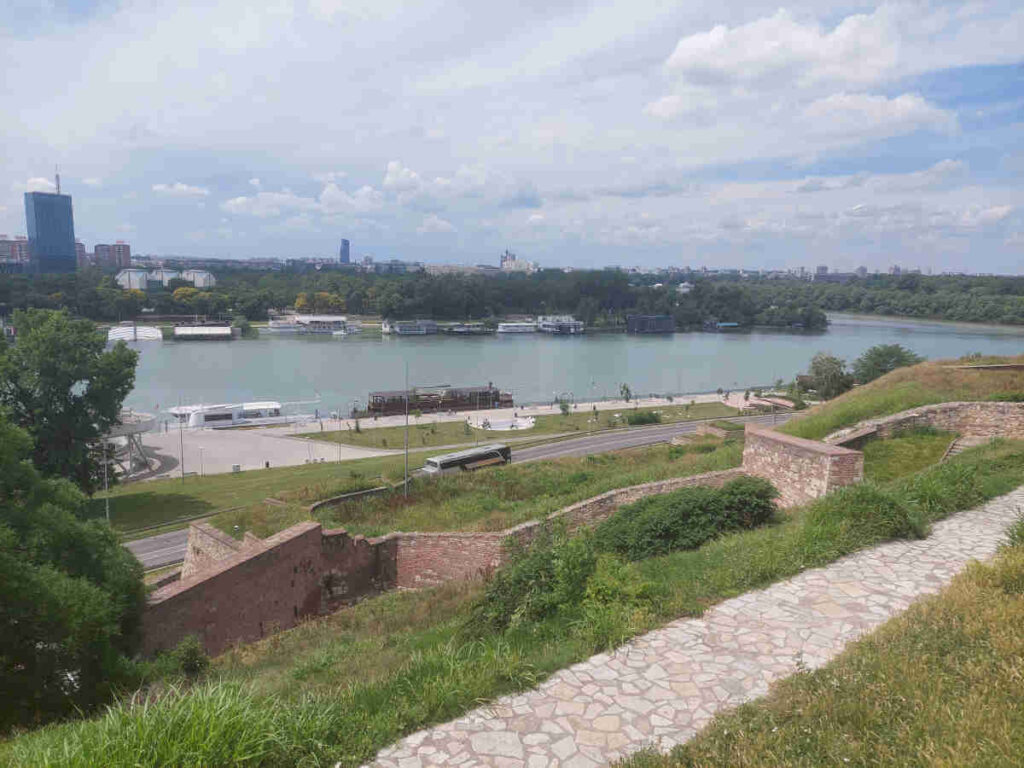
So next time you find yourself in Belgrade, take a leisurely stroll through Kalemegdan Park, and let its timeless beauty and storied past captivate your senses. Whether you’re discovering ancient fortresses, enjoying a picnic under the shade of centuries-old trees, or simply soaking in the breathtaking views, Kalemegdan promises an unforgettable experience.
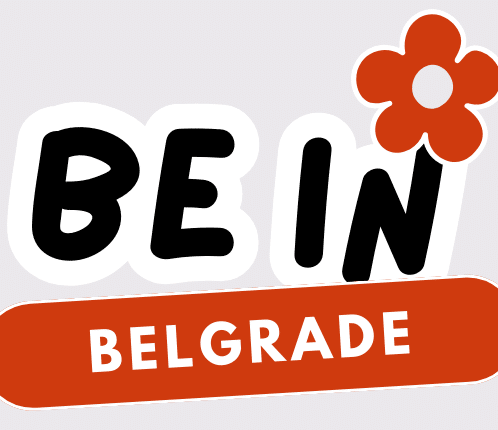
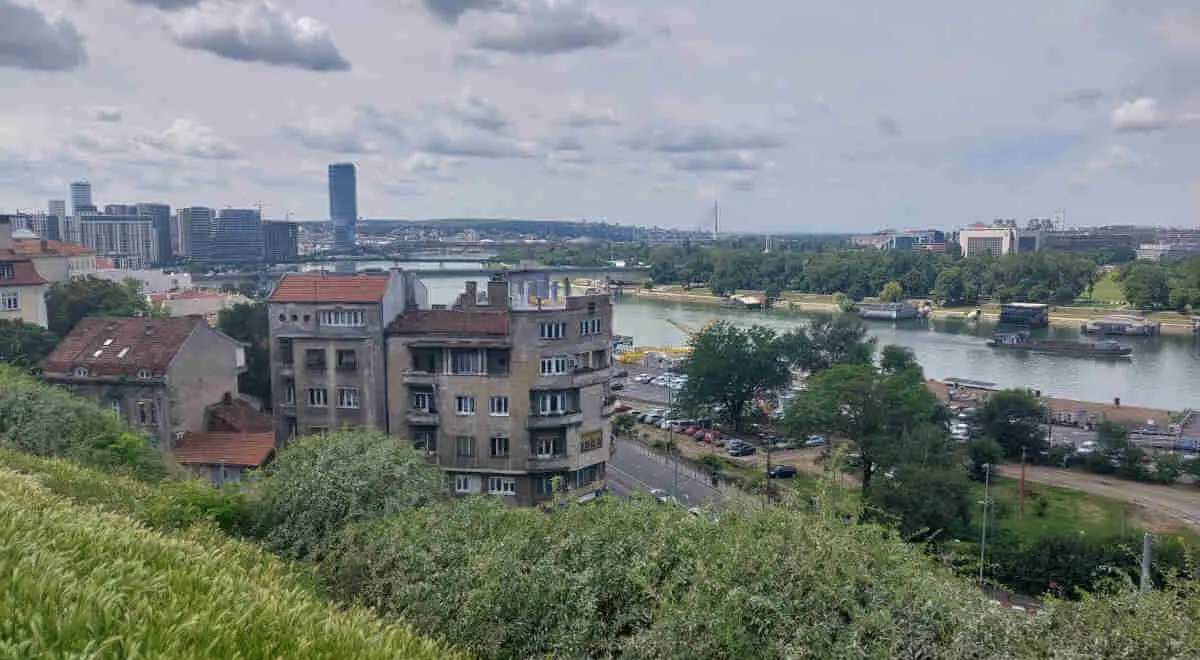
Leave a Reply